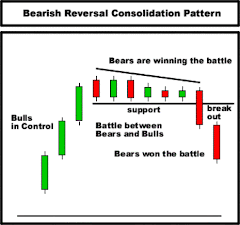What are Index Futures?
Stock index futures are have recently become very popular and have a large number of contracts being traded daily. Index futures are created to replicate the performance of the underlying index that the futures contract represents. Index futures exists for many global stock markets such as the S&P500, DOW Jones Industrial Average, Russell 2000, German DAX, London's FTSE, French CAC40, and other established world markets.
Index futures can be used to hedge existing equity positions or even to speculate on the movement of an index. Gains and losses will be relatively large compared to index ETF's that trade on the stock exchanges due to the fact that the leverage in a futures contract is very large. For example, one S&P500 futures contract is valued at 250 times the index price. Assume the S&P is trading at 1300, this would render one contract to be valued at $325,000 and can be purchased for a fraction of that number.
Contract Months
Index futures contracts are cash settled and will have no delivery of any security at expiration. Futures contracts roll over quarterly and will expire on the third Friday in March, June, September, and December. The contract with an expiration date closest to the current date is considered the front month and this futures contract will have the bulk of the trading volume; however, contracts with different expirations may be traded at the same time.
Each contract is denoted with a letter indicating the expiration month. H represents March, M represents June, U represents September, and Z represents December.
Therefore, the symbol for a S&P futures contract expiring June 2008 would read as SPM08. SP is for the big S&P contract while ES represents the E-mini contract.
S&P500 Futures Contract
The S&P500 futures is the most popular index futures contract traded. It contains 500 of the largest companies in the world and therefore, it's movement is indicative of the direction of the entire market. Many day traders use the direction of the S&P futures to confirm a long or short position that they are about to take and since it is traded 24 hours per day, the S&P500 futures is used as a guide to the stock markets direction before it opens at 9:30 am EST.
E-Mini Futures
The e-mini futures contract was introduced to bring more liquidity into the futures market. An e-mini futures contract is valued less than that of the larger S&P big contract but represents the same underlying index and thus allows more traders to participate. The difference is that this contract is valued at 50 * Index price instead of 250 * Index price. This means that each point is worth $50 on an S&P e-mini futures contract and $250 on a S&P big contract.
Conclusion
I can't stress enough that you must tread lightly when you first get into trading futures. The market can create large losses in a very short amount of time if your risk parameters and strategy are not defined clearly. Start with one contract and build on that as your results improve. Remember, you are trading with a massive amount of leverage and there is no reason to be hero and buy 10 contracts on your first day. On the flip side of the coin, trading index futures can reap you a large sum of money when done successfully.
See You At the Top,
mysmp.com
Kunal Vakil is the co-founder of mysmp.com (My Stock Market Power) which provides free trading articles to investors.
Please visit http://www.mysmp.com/ for more free articles.
Article Source: http://EzineArticles.com/?expert=Kunal_Vakil
| Free Technical Analysis Tutorial |
| Hot Stock Picks |
| Stock Market Tips |



Index Futures Explained
Subscribe to:
Post Comments (Atom)





No comments:
Post a Comment